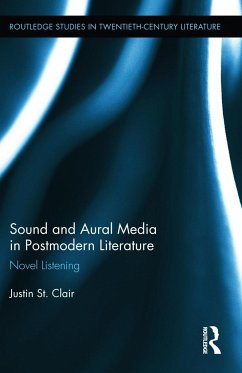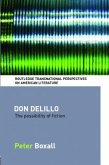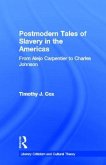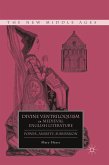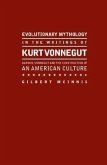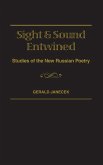This study examines postmodern literature- including works by Kurt Vonnegut, William Gaddis, Don DeLillo, Philip K. Dick, Ishmael Reed, and Thomas Pynchon -arguing that one of the formal logics of postmodern fiction is heterophonia: a pluralism of sound. The postmodern novel not only bears earwitness to a crucial period in American aural history, but it also offers a critique of the American soundscape by rebroadcasting extant technological discourses. Working chronologically through four audio transmission technologies of the twentieth century (the player piano, radio, television audio, and Muzak installations), St. Clair charts the tendency of ever-proliferating audio streams to become increasingly subsumed as background sound. The postmodern novel attends specifically to this background sound, warning that inattention to the increasingly complex sonic backdrop allows for ever more sophisticated techniques of aural manipulation-from advertising jingles to mood-altering ambient sound. Building upon interdisciplinary work from the emerging field of sound culture studies, this book ultimately contends that a complementary, yet seemingly contradictory double logic characterizes the postmodern novel's engagement with narratives of aural influence. On the one hand, such narratives echo and amplify postwar fiction's media anxiety; on the other hand, they allow print fiction to appropriate the techniques of aural media. This dialectical engagement with media aurality-this simultaneous impulse to repudiate and to utilize-is the central mechanism of the heterophonic novel.
"Packed with information and insight into a fascinating and emerging field, Sound and Aural Media in Postmodern Literature is a vital and accessible inquiry into often overlooked aspects of the postmodern novel." -Los Angeles Review of Books
"Working at the intersection of sound studies, media studies, and literary studies, St. Clair's book makes important contributions to each. By recognizing background sound as a potential communications channel in its own right, St. Clair helpfully pushes beyond the signal-or-noise binary that many sound studies accounts borrow from information theory...St. Clair assembles an impressive body of historical data. But the standout contribution of Sound and Aural Media in Postmodern Literature is the brilliant way it conceptualizes the meeting of literature and audio...[the book] provides an excellent tutorial in how to listen to literature and a compelling argument for why we should tune in." --Sean Keck, Brown University, Journal of American Studies
"The strength of this work lies in its connection of postmodern fiction to recent work in sound culture studies, its attention to the historical context of postmodern fiction's engagement with audio technologies, and its detailed close readings of literary representations of background sound...Especially because of this kind of historical evaluation of key technologies and the way that they impact the post-1945 soundscape in connection with impactful literary analysis, Sound and Aural Media is an important intervention in literary criticism of the period that has eschewed consideration of the role that background noise plays in a variety of different novels." --The Year's Work in English Studies
"Working at the intersection of sound studies, media studies, and literary studies, St. Clair's book makes important contributions to each. By recognizing background sound as a potential communications channel in its own right, St. Clair helpfully pushes beyond the signal-or-noise binary that many sound studies accounts borrow from information theory...St. Clair assembles an impressive body of historical data. But the standout contribution of Sound and Aural Media in Postmodern Literature is the brilliant way it conceptualizes the meeting of literature and audio...[the book] provides an excellent tutorial in how to listen to literature and a compelling argument for why we should tune in." --Sean Keck, Brown University, Journal of American Studies
"The strength of this work lies in its connection of postmodern fiction to recent work in sound culture studies, its attention to the historical context of postmodern fiction's engagement with audio technologies, and its detailed close readings of literary representations of background sound...Especially because of this kind of historical evaluation of key technologies and the way that they impact the post-1945 soundscape in connection with impactful literary analysis, Sound and Aural Media is an important intervention in literary criticism of the period that has eschewed consideration of the role that background noise plays in a variety of different novels." --The Year's Work in English Studies

